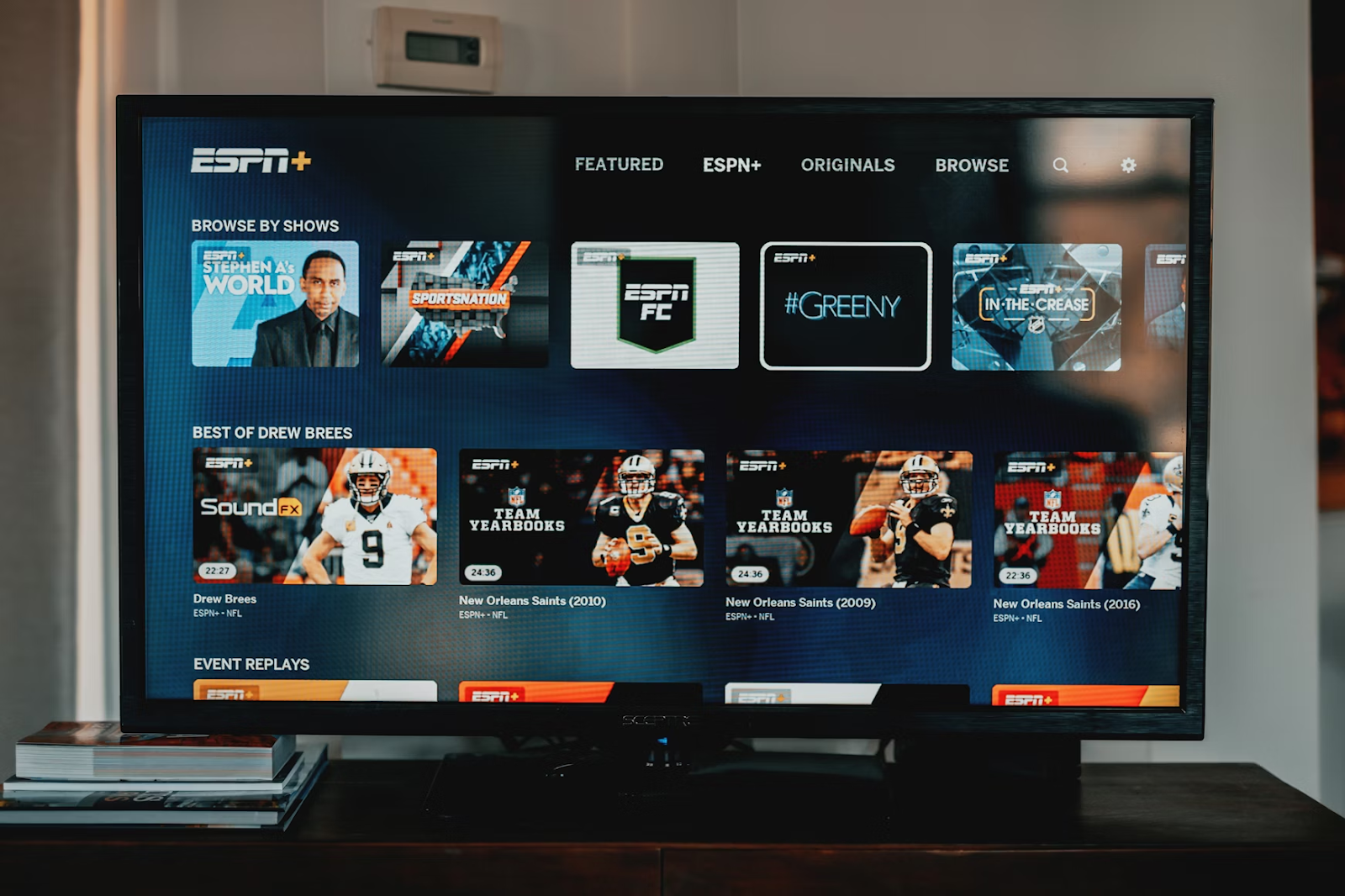- Home
- Strategus Blog
- 10 OTT Trends Shaping CTV Advertising in 2025
10 OTT Trends Shaping CTV Advertising in 2025
 Traci Ruether
Traci Ruether
13 minutes read

Streaming is now the main way people watch TV. 83% of U.S. adults use streaming services and only 36% still keep cable or satellite. In May 2025, streaming reached 44.8% of total TV viewing, passing cable and broadcast combined for the first time. At the same time, 73.6% of all TV time is now spent with ad-supported content, making connected TV advertising the fastest-growing part of video.
In this article, we look at more of such important OTT trends of 2025 and explain what it means for advertisers.
Key Takeaways
- Streaming dominates: 83% use streaming, 36% keep cable; May 2025 streaming hit 44.8% of viewing; 73.6% of TV time is ad-supported.
- Hybrid monetization expands with HVOD, vMVPD, and FAST; telco and streamer bundles counter churn, broadening reach but complicating delivery and measurement across platforms.
- Live sports shift to streaming drives audience growth; fragmented rights require multi-platform buys, cross-channel frequency control, and unified reach measurement.
- Retail media converges with CTV via Amazon and Walmart; interactive and shoppable formats turn TV into a conversion channel, while walled gardens hinder holistic attribution.
- AI enables dynamic creative and contextual placements; political spend lifts CPMs; winning strategies prioritize viewer experience, frequency management, and vendor-agnostic data unification.
- Speak to a Strategus expert today to work through fragmentation, connect CTV impressions to outcomes, and scale performance with frequency controls, retail integrations, and transparent reporting.
10 OTT/CTV Advertising Trends You Must Know in 2025
Here’s a quick look at the ten most important trends you should know this year:
1. Ad-Supported Streaming Is the Norm

Streaming has fully transitioned into an ad-supported era. Viewers have reached a breaking point with too many subscriptions, prompting many to downgrade or cancel ad-free plans in favor of cheaper, ad-supported options. In response, nearly every major streaming platform, Netflix, Disney+, Hulu, Max, Peacock, and Paramount+, now includes advertising tiers as a standard part of their services.
This shift has made streaming look more like traditional television, but with far more sophisticated targeting, tracking, and creative possibilities. Ad-supported streaming is no longer a niche. It’s the primary way audiences consume content across devices and platforms.
For marketers, this presents a rare opportunity. Even though streaming dominates viewer attention, advertising investment hasn’t yet caught up. That leaves open inventory and lower competition for brands willing to act early.
By embracing ad-supported streaming now, advertisers can secure prime visibility across premium platforms and connect with audiences at scale. Ad-supported tiers also benefit everyone in the ecosystem: viewers enjoy lower costs, brands gain new touchpoints for engagement, and platforms get more ways to deliver personalized, measurable campaigns.
The future of television advertising is not subscription-based. It’s interactive, data-driven, and powered by the flexibility of ad-supported streaming.
2. Viewer Flexibility: HVOD, vMVPD, FAST

Streaming is no longer one-size-fits-all. In May 2025, streaming reached 44.8% of all TV viewing, outpacing cable and broadcast combined for the first time. The growth shows how streaming now mirrors the variety that traditional TV once offered, but with more choice and control for viewers.
Different models let people stream in ways that fit their budget and habits:
- Hybrid Video on Demand (HVOD): Services like Netflix, Disney+, and Prime Video use both ads and subscriptions to bring in revenue. This appeals to viewers who want premium content but do not want to pay the highest subscription prices.
- Virtual Multichannel Video Programming Distributors (vMVPDs): Platforms like YouTube TV give subscribers access to live channels, including sports and news, in a streaming environment. For households cutting the cord, this offers the feel of cable without the box.
- Free Ad-Supported Streaming TV (FAST): Apps like Pluto TV, Tubi, and The Roku Channel deliver free live channels supported by ads. Many smart TVs now include FAST apps by default, making them an easy entry point for viewers who want no-cost options.
On average, U.S. households now subscribe to about four paid streaming services while also using free ad-supported apps. This mix shows that flexibility is the real winner in 2025; streaming gives every household a model that works for them.
3. Bundling 2.0: Telco and Streamer Deals

Bundles have become the answer to subscription fatigue. Rising prices have pushed many viewers to cancel individual services, so streamers and telecom companies now package multiple platforms together to reduce churn.
One example is Verizon, which still offers a Netflix and Max (with ads) bundle for $10 a month as part of its wireless perks program. Disney also continues to market its bundle of Disney+, Hulu, and ESPN+, which saves users money compared to paying separately.
Price hikes make bundles more attractive. In October 2025, Disney+ and Hulu raised prices again, including increases for both ad-free and ad-supported tiers. As subscription costs rise, bundled offers look like a better value and help keep subscribers from canceling.
The result is clear. Bundles are no longer just a marketing strategy; they are now a core part of how streaming services fight churn and keep viewers engaged across multiple apps.
For advertisers, bundles mean broader reach across more platforms, but they also require careful planning since ad delivery and measurement can vary from one service in the bundle to another.
4. Live Sports Shifts to Streaming

Sports are now one of the strongest drivers of streaming growth. In May 2025, streaming hit 44.8% of total TV viewing, and sports were a major reason for this surge. Millions of fans are moving from cable to platforms like YouTube TV, Amazon Prime Video, Apple TV+, and Peacock to watch live games.
The Super Bowl LIX in February 2025 set a new audience record with 127.7 million average viewers and 191.1 million total reach, thanks to expanded streaming options on Paramount+ and Tubi. Streaming did not just supplement the broadcast; it played a central role in driving the biggest U.S. TV audience ever.
Plans for a joint ESPN, FOX, and Warner Bros. Discovery sports app called Venu Sports were canceled in January 2025 after legal and competitive challenges. Instead, each network continues to build its own sports strategy. ESPN is leaning on ESPN+, Amazon holds Thursday Night Football, YouTube has NFL Sunday Ticket, and Netflix debuted WWE Raw in 2025.
This shift shows that the future of live sports belongs to streaming, but it also creates fragmentation. Advertisers need to buy across multiple platforms to reach the full sports audience, making frequency control and cross-channel measurement more important than ever.
5. Retail Media and CTV
Retail media is becoming a major force in connected TV. Amazon leads the way. After making Prime Video ad-supported by default in 2024, Amazon increased its ad load to about 4-6 minutes per hour in 2025 and rolled out new interactive ad formats, including pause ads and shoppable units.
Its ad business grew more than 22% year over year in Q2 2025, reaching about $15.7 billion. With its control over streaming, devices, shopper data, and its own demand-side platform, Amazon has built the most complete retail media and CTV ecosystem.
Walmart is also pushing deeper into this space. It completed its acquisition of Vizio in December 2024, giving Walmart Connect access to a smart TV operating system and more than 18 million active SmartCast accounts.
This lets Walmart connect ads on Vizio TVs to its retail data, a step that brings closed-loop measurement to the living room.
Other players are testing similar moves. Roku has already partnered with Kroger to combine retail data with streaming ads, and analysts expect more acquisitions or partnerships between retailers and streaming platforms in 2025.
For advertisers, this trend means CTV is no longer just about impressions and reach—it is becoming a direct performance channel. Retail data allows ads to be tied to real purchases, giving brands proof of impact and opening the door for campaigns that move from awareness to conversion on the same screen.
6. Walled Gardens Deepen
Connected TV is now dominated by closed ecosystems. Amazon, YouTube, Disney/Hulu, and device makers like Roku and Vizio each control their own ad inventory, identity systems, and reporting.
This walled garden model makes it harder for advertisers to see a complete picture of their campaigns.
The impact shows up in campaign data. According to the Innovid 2025 CTV Report, the average connected TV campaign reached only 19.6% of households, while frequency averaged about 7.1 exposures per home.
This means advertisers often overserve some viewers while missing others entirely, because each walled garden measures reach and frequency only within its own ecosystem.
The challenge is clear: advertisers cannot run audience-first strategies if their data is split across multiple platforms. Frequency capping, cross-platform measurement, and identity resolution are important to avoid waste. As fragmentation gets more common, vendor-agnostic partners and tech platforms that can unify data across services will become more valuable in 2025.
7. Shoppable and Interactive CTV

Connected TV is turning into a place where people can watch and shop at the same time. Amazon expanded its interactive and shoppable ad formats in 2025, including new pause ads that show products when viewers stop their stream. These ads connect directly to Amazon’s retail catalog, letting viewers add products to their cart without leaving the TV.
Disney also launched commerce-enabled formats across ESPN, Hulu, and Disney+ in 2025. One example is the “Virtual Concession Stand” with Gopuff, which allowed viewers to buy snacks and drinks during live sports broadcasts. This approach brings real-time shopping into high-demand viewing moments.
Fubo introduced the first programmatic pause ads, allowing advertisers to bid in real time for ad slots when viewers pause content. This innovation shows how interactive formats are moving beyond simple click-to-buy and becoming more dynamic.
These changes make CTV a more direct performance channel. Shoppable ads connect awareness with conversion at the same time, while interactive formats keep viewers engaged. For advertisers, 2025 is the year to start testing these formats and learn how they can move audiences from watching to buying.
8. Political Ads on CTV

Political campaigns are becoming a major part of connected TV. After record spending in 2024, CTV is set to capture an even larger share of political budgets during the 2026 midterm elections.
AdImpact projects total political ad spend will reach about $10.8 billion, with connected TV growing by roughly 20% compared to 2024.
Early signs are already visible. By mid-2025, more than $1 billion had been spent on ads for upcoming races, and much of that money is flowing into CTV inventory. With CTV’s ability to target by district, income, or issue, political strategists see it as the most efficient channel for persuading voters.
This shift will affect advertisers in every industry. As political ads flood into streaming, CPMs in competitive states and districts will climb, and available inventory will tighten. Brands running campaigns during this period will need to plan ahead, secure premium placements early, and adjust frequency strategies to avoid getting lost in the noise.
9. User Experience and Ad Quality
As ad-supported streaming becomes the standard, viewers have grown more comfortable with seeing commercials while they watch. However, tolerance only goes so far. Audiences quickly lose patience when they see the same ad repeatedly or encounter spots that feel irrelevant to their interests.
The growing volume of ads on streaming platforms requires advertisers to plan carefully. Without smart frequency management and thoughtful targeting, campaigns can easily oversaturate certain households while completely missing others. This not only wastes ad spend but also erodes the viewing experience that makes connected TV so effective in the first place.
The future of ad-supported streaming depends on maintaining balance. Viewers will accept ads if they’re relevant, well-timed, and seamlessly integrated into the content experience. That’s why advertisers must prioritize quality over quantity, using data to control frequency, personalize creative, and measure reach across multiple platforms.
When done right, CTV advertising can enhance the viewer journey instead of interrupting it, strengthening both brand perception and long-term loyalty.
10. AI in CTV Advertising
Artificial intelligence is changing how ads are created and delivered on connected TV. Advertisers are no longer just relying on AI for audience data; they are using it to personalize ads in real time.
Amazon introduced AI-powered contextual pause ads in 2025, which show products based on what a viewer is watching or doing on screen.
Disney and other major players are also testing generative AI tools to automatically adjust creative elements like background and language or tailor offerings to better suit different audiences.
Dynamic creative optimization is moving to the next level. Instead of producing a few versions of an ad, brands can now deliver dozens or even hundreds of variations, each tailored to specific households.
This means a family streaming a kids’ show might see a snack ad featuring cartoon characters, while a sports fan watching ESPN+ might see the same brand linked to game-day promotions.
For advertisers, AI makes campaigns more efficient and more personal. In 2025, the best-performing strategies will be the ones that pair creative templates with real-time data, making ads feel relevant without overwhelming viewers.
Why Do These Trends Matter for CTV Advertisers
The connected TV world in 2025 is no longer in its early developmental stage; it’s fully matured. Every major shift outlined above represents a deeper evolution in how audiences watch, interact, and respond to advertising. For CTV advertisers, these trends are not just industry updates; they define the strategic choices that determine whether campaigns thrive or fall flat.
Ad-supported streaming has become the dominant way people watch television, but it also raises expectations. Viewers now expect ads that are personalized, relevant, and unobtrusive. Advertisers who rely on outdated linear-style planning risk wasting impressions or alienating their audience. The message is clear: smart targeting, careful frequency management, and adaptive creative strategies are no longer optional. They’re something you definitely have to invest in.
The diversification of streaming formats, from HVOD to FAST, gives advertisers unparalleled reach, but it also fragments audiences across platforms. As a workaround, marketers must look at the bigger picture by integrating buys across multiple ecosystems and measuring performance beyond a single network or app. The brands that win in 2025 will be those that can unify campaign data, track audiences across devices, and maintain consistent storytelling wherever people watch.
Retail media’s entry into CTV, the growth of interactive ad formats, and the rise of AI-driven personalization are all redefining what performance looks like in streaming. CTV is no longer just about brand awareness. It’s about measurable outcomes: website visits, store foot traffic, and actual purchases. Advertisers who combine creativity with data science will find that connected TV offers the best of both worlds — the storytelling power of television and the precision of digital.
However, challenges like walled gardens, ad fatigue, and political clutter highlight why execution matters as much as strategy. The best campaigns balance scale with relevance, reach with restraint, and automation with human insight.
Ultimately, these trends point to one truth: CTV is the future of video advertising, but success depends on expertise. Advertisers who adapt early, invest in smarter technology, and partner with experienced teams will not only reach today’s streaming audiences but also shape the future of television advertising.
Closing Thoughts — Turn CTV Trends Into Results With Strategus
Connected TV has moved from a new channel to the center of modern advertising. Streaming now dominates viewing time, ad-supported models are the norm, and retail media is linking TV exposure directly to sales.
For advertisers, this creates both opportunity and complexity: fragmented platforms, political ad competition, and rising ad loads demand smarter strategies and stronger partners.
At Strategus, we help brands work their way through these trends by delivering campaigns that cut through the noise and deliver measurable results. Our solutions are built to handle the challenges of 2025 and beyond:
- Vendor-agnostic buying across premium CTV inventory to maximize reach and reduce waste
- Advanced frequency management to control duplication and protect the viewer experience
- Retail media integrations that connect CTV impressions to real purchases and outcomes
- AI-driven creative tools for dynamic personalization and interactive ad formats
- Transparent reporting that gives you a clear view of performance across all platforms
Looking to keep up with the latest trends in CTV? Speak to a Strategus expert today to learn more about how we can help.
Frequently Asked Questions
1. What Are the Key Trends in Streaming TV and CTV Advertising Right Now?
Ad-supported tiers are standard across major platforms. Live sports moves deeper into streaming. Retail media links CTV exposure to real purchases. Walled gardens limit unified measurement. Interactive and shoppable formats grow. AI personalizes creative and targeting. Advertisers need cross-platform frequency control, vendor-agnostic buying, and clear outcome measurement to avoid waste.
2. Is OTT and CTV the Same?
OTT means video delivered over the internet on any device. CTV is OTT viewed on a television through a smart TV or a connected device like Roku or Fire TV. All CTV is OTT, but not all OTT is CTV because phones, tablets, and laptops also count as OTT viewing.
3. What are the Best Ad Formats to Promote VOD Offers in the US?
Short pre-roll and mid-roll video spots work well when they carry a clear offer and a strong end card. Use interactive overlays, QR codes, or shoppable units to drive action on the couch. Pair CTV with mobile retargeting to close the loop and measure trials, subscriptions, or rentals.

Traci Ruether is a content marketing consultant specializing in video tech. With over a decade of experience leading content strategy, she takes a metrics-driven approach to storytelling that drives traffic to her clients' websites. Follow her on LinkedIn at linkedin.com/in/traci-ruether or learn more at traciruether.com.
Strategus is a managed services connected TV(CTV) advertising agency with over 60,000+ campaigns delivered. Find out how our experts can extend your team and drive the result that matter most.
Talk to an Expert
OTT Advertising Trends to Watch
- Ad-Supported Streaming Becomes the Norm
- Expanding Flexibility in How Viewers Stream
- New Approaches to TV Bundles
- OTT Takes Over Live Sports
- Retail Media Networks Eye
- Growing Fragmentation Across Walled Gardens
- Shoppable Ad Units and Interactive TV
- Political Ads Dominate Commercial Breaks
- Improvements to User Experience
- AI for Dynamic Ad Personalization
Seeking a Custom CTV Strategy That Delivers?
What to read next
App Event Tracking: Tie Mobile App Activity to CTV Campaigns
Let’s say you’re running a CTV campaign for a personal finance app.
5 minutes read

Stop Guessing Who Your Audience Is — Let Their Apps Tell You
Connected TV (CTV) targeting often falls in one of two camps.
8 minutes read
See Who Bought After Your Ad + How Much They Spent
You can’t improve what you can’t measure. And for years, that’s been a major problem with TV advertising.
4 minutes read

First-Party Attribution: Match Ads to Sales With CRM Data
The value of first-party data continues to grow.
7 minutes read














